In Hollywood’s ever-increasing race to adapt existing intellectual property to capitalize on their built-in familiarity with audiences, things are getting weird. Of course movies and TV shows based on merchandise are nothing new – Transformers, G.I. Joe, My Little Pony, Care Bears, all that stuff started out as toys that were later adapted into children’s cartoons which were mostly intended to create interest in the franchise that would translate into sales of those toys and other related stuff. But all of the aforementioned properties are comprised of distinct characters and at least an implied plot. This was true even of the movie adaptation of the board game Clue, where the screenwriters had a cast of characters and a murder mystery to work with when developing the script.
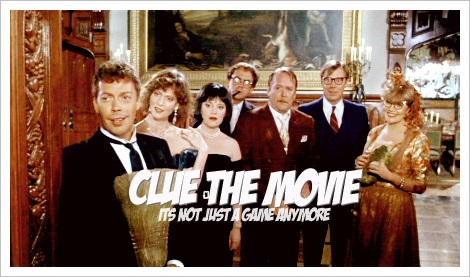
But as the American film industry becomes more risk-averse, with bigger and bigger budgets requiring bigger and bigger box office takes, studios are less willing to take chances on new and untested concepts, which is why we’re seeing an explosion in sequels and prequels, as well as more adaptations from other media than ever before. They’re betting that audiences who are already aware of the basic tropes – or at least the name – of a TV show from the ‘80s or a popular videogame or whatever – will be interested enough to go see how Hollywood has gone and ruined it, which is really all that the studios care about: whether people will buy a ticket.
We’re running out of stories, though. Or, rather, with the rush to buy up seemingly any and every TV show, videogame, comic book, and so on – if not to make it into a movie then at least to make sure that nobody else does – the film industry has started adapting stuff that most people would consider inherently unadaptable. Products that haven’t got any, or enough of, the necessary components to comprise a successful narrative. And the mainstream American film is, whatever else it might be, a narrative medium. So while we haven’t yet been subjected to Raisin Bran: The Motion Picture, we have recently seen a few films the premises of which might have seemed incomprehensible not too long ago; two of the most notable examples being The Lego Movie and Battleship.
Both of these movies are based on properties that haven’t really got any well-defined characters or plot – and yet The Lego Movie was a huge box office success and widely considered to have been an artistic success as well, whereas Battleship was a financial and critical failure. What made the former adaptation of a non-narrative property so good, and the latter so bad? And what can we learn from these two examples about the right and wrong way to wring compelling stories out of objects seemingly devoid of stories, going forward?
Aesthetic
In a visual medium like film, aesthetic is going to be the first and most obvious factor you need to match in order to make a product into a convincing adaptation. The Lego Movie is a Lego movie because (almost) everything is made out of Lego. The Lego aesthetic is probably the most important part of what will make or break the success of a movie based on Lego, for obvious reasons. That’s what makes videogames like Lego Star Wars into a Lego game: it’s the Lego aesthetic applied to the characters and plot of the Star Wars movies. And, notably, one of the criticisms of the Star Wars prequel trilogy was precisely that the aesthetic was wrong: Star Wars is supposed to be old-looking and broken down, whereas in the prequels, everything under the Republic looked shiny and new. The fact that this makes narrative sense (the Empire didn’t really care about keeping everything look nice or fixing stuff in far-flung backwaters like Tattooine) doesn’t matter to the people who have this problem with the prequels, because in a certain sense, anything that doesn’t look like Star Wars can’t really fully be Star Wars. So you could make Lego Casablanca and it would be a Lego movie, and would be a great movie, but it wouldn’t be The Lego Movie because aesthetic is only a single factor in what makes Lego what it is.
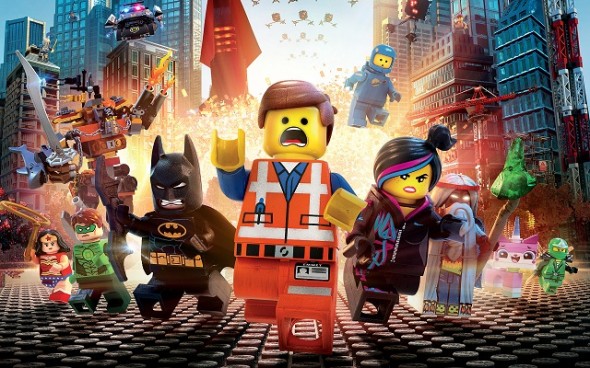
What’s Battleship’s aesthetic? It’s military watercraft, and grids divided into alphanumerically designated squares. Battleship the movie has these. There certainly are a lot of boats in Battleship, and one of them is even a battleship. And there are notably scenes around the movie’s climax (and over the closing credits) that are very recognizably modelled after the game’s visuals and gameplay aspects. So it gets this right. The problem that the movie has with this aesthetic, though, is twofold: first, there isn’t nearly enough of it. Second, too much of the film doesn’t take sufficient advantage of the battleship aesthetic either because too many scenes take place on land, or because the main protagonists are aliens, so the designs of the alien ships and the aliens themselves usurp much of the movie’s aesthetic that should have been used to make the movie resemble the game more closely.
Theme
The theme of the thing you’re trying to adapt is absolutely vital to creating the characters, plot, and setting that will make your adaptation either make sense or not as an adaptation. Often but not necessarily related to its aesthetic, everything is going to have a theme, even if you have to do a lot of work to seek it out. If you don’t know what the theme is, you can look to the aesthetic for clues, but even better indicators of theme are the thing’s utility, goals, and rules.
Let’s look at Lego – what is Lego about? Well, Lego is a kids’ construction toy. So it’s about building. It’s about imagination. But it’s also the product of a corporation that was actually in danger of going out of business until they began selling playsets modelled after other licensed properties (hence Lego Star Wars, and so on). Thinking about these issues obviously created a very interesting idea about the themes and metathemes of Lego for the writers of the movie: there is an ethical tension inherent in Lego between the forces of unfettered creativity and the capacity for social productivity that comes along with following the rules. After all, your Lego Millennium Falcon is only a Lego Millennium Falcon if you take the pieces that come in the box and build a Millennium Falcon with them. So Lego itself ends up being how to balance the infinite possibilities presented to you with the necessity of making concrete decisions on how to realize that potential. And that is exactly what the Lego Movie is about – because in recognizing that theme, the writers created characters whose motivations and weaknesses naturally come into conflict as a result of embodying this thematic tension.
What, then, is the theme of the game of Battleship? Well, the goal of the game is to destroy your opponent’s fleet while avoiding having your own fleet be destroyed. How do you achieve this? Neither you nor your opponent can see each other’s ships, so you have to make educated guesses about your enemy’s location, firing missiles and registering whether you score a hit or a miss. When you drill down to the core of it, then, Battleship is about deriving a practical understanding of how to achieve your goals when you have very limited access to information about the world.
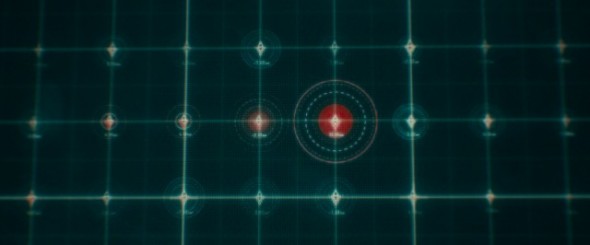
To some extent, the movie does acknowledge this. The aliens’ ships are invisible to the U.S. Navy’s radar – and Earth’s ships also can’t be seen by whatever form of location technology the aliens use. Okay, whatever. So in one of the maybe two or three interesting scenes in this movie, the Japanese Navy Captain realizes that although they can’t risk getting close enough to the aliens’ ships to target them visually, they can access the NOAA’s tsunami warning system to track the water displacement caused by the massive alien ships moving past the warning system’s sensors. So you get the crew of the Destroyer sitting around a console and calling out coordinates and then either hitting or missing one of the alien ships. That was kind of cool – but, again, like the aesthetic problem, there isn’t enough of it (it isn’t even really properly the climax of the movie, which it should have been), and that single scene was not enough to build an entire movie around, which is why so much of the rest of the film feels like padding. The movie’s other major components don’t investigate the question of how to make decisions when your knowledge is incomplete – as we will see, neither the characters’ motivations nor the overall plot are particularly informed by this issue, and so the movie doesn’t feel like a Battleship movie precisely to the extent that the Lego Movie very much does feel like a Lego movie.
Character
All stories need characters, and in their original forms neither Lego nor Battleship really has any. So in adapting a non-narrative object into a narrative medium, as a writer you’re first going to have to invent some characters. The trick is creating characters who make sense in the world you’re envisioning – that is, characters that the audience will accept as being “Lego people” or “Battleship people” or whatever. To some extent, in the Lego Movie the writers had their work cut out for them, since there is so much overlap between character and aesthetic here. So to the extent that the “people” in Lego toys are not really characters but rather generic little yellow guys with maybe different coloured bodies or helmets on, the writers could take those guys, give them names, and turn them into legitimate and convincing characters for a Lego movie. And so you get Emmet (generic construction worker guy), WyldStyle (Lego figure that you know is a girl because she has hair), Vitruvius (only non-licensed black Lego guy ever, has beard), Lord Business (wears a tie), and so on.
Of course they need personalities, too, which is really what distinguishes characters in a narrative from mere person-shaped objects. And this is where character ties into theme (which we’ll get to later). What kind of people make convincing characters in a Lego narrative? Builders, of course. Lego is a building toy, and so any authentic Lego story has got to have building as a central theme, and builders as its main characters. It’s within these limitations that you can now start creating actual people out of the necessities of what Lego is and means. Emmet is the simple guy who’s great at following instructions but longs for popularity. Lord Business is a control freak who hates the chaos of unfettered creativity. And so on. This is what every writer does, of course, but what’s especially important when adapting a non-narrative property is delineating your boundaries, figuring out first and foremost what makes a Lego character a Lego character as opposed to the kind of character who might equally appear in any other random movie.
In Battleship, the characters clearly need to be Navy officers, and mostly they are. The problem with the characters in Battleship that makes them, ironically, less believable and interesting than even the minor characters in the Lego Movie, is that to the extent that the characters have any personalities beyond “is Navy officer,” their personalities don’t have anything to do with the themes of Battleship the game the way that the characters’ personalities in the Lego Movie conform with the themes of Lego. The single character who has any development whatsoever, the protagonist, (I think his name was “Generic Good-Looking Young White Guy”) doesn’t reflect the kind of personality that we need and expect from a movie version of Battleship. At the beginning of the movie he’s your stereotypical rebellious layabout who meets a pretty girl at a bar (who happens to be the daughter of his brother’s commanding officer in the Navy) and then drunkenly breaks into a convenience store to get her a chicken burrito. He’s then practically forced to enlist in the Navy by his brother. Besides not comporting with the spirit of Battleship, his motivations don’t feel authentic to the audience. The most interesting character in Battleship, in fact, is the Japanese naval captain to whose authority what’s-his-name the protagonist defers in what seems like his first-ever reasonable decision. That guy could have been the actual protagonist of this movie and it would have made more sense and been more engaging even if the rest of the film was as poorly-written as it actually is.
Worse is the characterization – or non-characterization – of the antagonists, the aliens. In the Lego Movie, Lord Business is a fully realized character with understandable motivations that are in keeping with the themes of the movie. In contrast, the Battleship aliens are barely even characters: their motivations don’t make any sense, but neither do they seem to be mindless forces of nature (which could also be a legitimate antagonist, although that would make them part of the setting instead in that case). Despite one character saying that they’re “like the Conquistadores and the Incas,” the aliens don’t seem to be after resources or conquest, and they’re not accidentally destructive due to indifference or ignorance. They do try to re-establish communication with their home planet, and it’s sort of vaguely implied that this might be a pre-emptive attack by the aliens who are afraid that Earth is going to attack them – but really all of this is incidental, and the aliens are really nothing but an excuse to have ships blow up (and, to a lesser extent, an excuse to force the protagonist into an unearned position of authority so he can learn responsibility and prove himself to his girlfriend’s father).
Aliens! Why put aliens in a Battleship movie? What you want in a Battleship movie is more different kinds of naval vessels! Look, I love aliens and everything, but rule #1 for adapting non-narrative properties into movies should be: don’t add aliens unless you really have to. Even the writers of the Saturday morning cartoon based on Rubik’s Cube had the decency to make it magic.
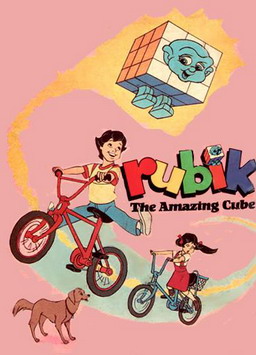
Plot
And, of course, you need a plot. In the majority of cases, plot should flow from character, so in broad strokes you’ve already got the basic elements of what the plot is going to turn out to be: the desires of the protagonist(s) are in opposition to the desires of the antagonist(s), and they come into conflict. If your characters’ desires are already in-keeping with the limitations set out by the requirements of the property (which they should be), then you’ve got a good place to start out.
So in the Lego Movie, you’ve got Emmet – he does everything by the book, which makes him very good at his job but also boring, which makes him unpopular, which makes him unhappy. Something has to break him out of his regular world, give him an opportunity to grow and realize his desires, and bring him into conflict with the antagonist. The antagonist is Lord Business, whose (still secret) plan is to destroy creativity by permanently gluing everything together. Emmet needs to learn of the plan and get swept up in the plot. How? He accidentally discovers the object that is required to defeat Lord Business, and is then sought out and recruited by a group of rebels who already know all about Lord Business’s plans. Emmet’s boring nature makes him reluctant to go along with them, but his craving to be liked entices him to join with this group of people who believe that he’s somehow special.
And so on. Once you have characters with desires, even a fairly generic plot can be really narratively engaging (just ask Guardians of the Galaxy). So as long as you have the right characters, your plot will reflect the needs of the story by allowing those characters to prove to the audience that they are the ones whose actions ought to be onscreen.
It’s way beyond the scope of this article, but for some really good explanation of story structure you should check out Community creator Dan Harmon’s writings on the subject (based on the work of Joseph Campbell).
The plot problems in Battleship emerge from the fact that the plot doesn’t logically flow from the characters, which themselves don’t comport with the themes of the game. Your plot should make sense in the context of the adapted object’s themes as well as the characters’ motivations. In this case, sure, beating the aliens forces the protagonist to “grow up,” but all of its components are so dissonant that it just ends up being a big mess. It doesn’t know if it wants to be Independence Day, or Alien, or War of the Worlds – and the problem is that it’s not supposed to be any of those things. It’s supposed to be Battleship – but it isn’t. Why is there hand-to-hand fighting with aliens in robot exoskeletons in this movie? It’s supposed to be about ship-to-ship combat. Why is there a subplot where a veteran who lost his legs in Afghanistan learns that he’s still a useful person and an important member of the military and society? It’s a good message, of course, but it doesn’t belong in this movie, which should be about missing information and not about diminished physical capacity.
So what would a Battleship movie whose aesthetics, themes, characters and plot were resonant with its origin material be like (the way that The Lego Movie was)?
I’m glad you asked
Here’s the synopsis: It’s 1967, near the height of the Cold War. A decorated World War II veteran – a U.S. Naval officer and tactician unmatched in his ability to anticipate and counter the enemy’s movements, who was blinded in the line of duty and has spent the past 20 years struggling with feelings of uselessness after the loss of his sight – comes out of retirement at his son’s urging, to investigate the recent disappearances of several American ships. The Russians, of course, are suspected.
Using his eidetic memory and analytical skills, he discerns a pattern from the approximate locations of where all the ships were last seen. Onboard the Battleship where his son is stationed, they set out to investigate, and they indeed find the wreckage of an American ship. They set a trap, using another small ship as bait to attract whoever has been destroying their ships. It works: a Russian vessel appears – but it’s invisible to radar! A battle ensues, stuff blows up, the Americans win.
The Americans go over to the wreckage of the Russian ship and discover it’s carrying what can only be described as an experimental cloaking device! It’s then revealed that the American military has been attempting to build such a device as well, but has failed in every attempt – now that they have the Russian prototype, they’ll be able to replicate its success. Records captured from the destroyed Russian ship indicates that there are currently five Russian vessels testing the devices along the edges of American waters. It’s now up to the old man to help the U.S. Navy find and destroy the Russian ships without the aid of radar and, hopefully, without igniting World War III in the process.
Now, as you may have noticed, what I’ve just described is not a perfect movie. The Lego Movie was perfect – this short exercise is full of clichés, also lacks a strongly motivated antagonist, and lifts at least two plot points from Star Trek episodes. Obviously a movie still needs to be well-thought-out and well-written in order to be good rather than just appropriate to its subject matter. The point is that this very quick synopsis includes basic comportment with the themes of the board game Battleship. At its most fundamental level, the Battleship movie failed because of an almost-total mismatch between its characters, plot, aesthetics, and theme. Similarly, the Lego Movie succeeded because its aesthetics, themes, characters, and plot all lined up perfectly. Aside from that, The Lego Movie was spectacularly well-written and well-acted, but I can’t help you with that.
The lesson that writers should take away from having dissecting these two toy adaptations (one a success, the other a failure) is: first understand what your subject is about. And make your movie about that.
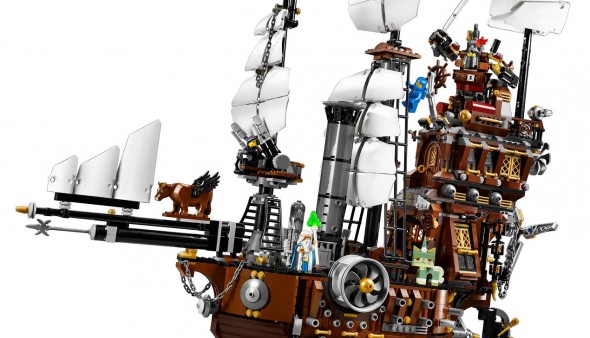
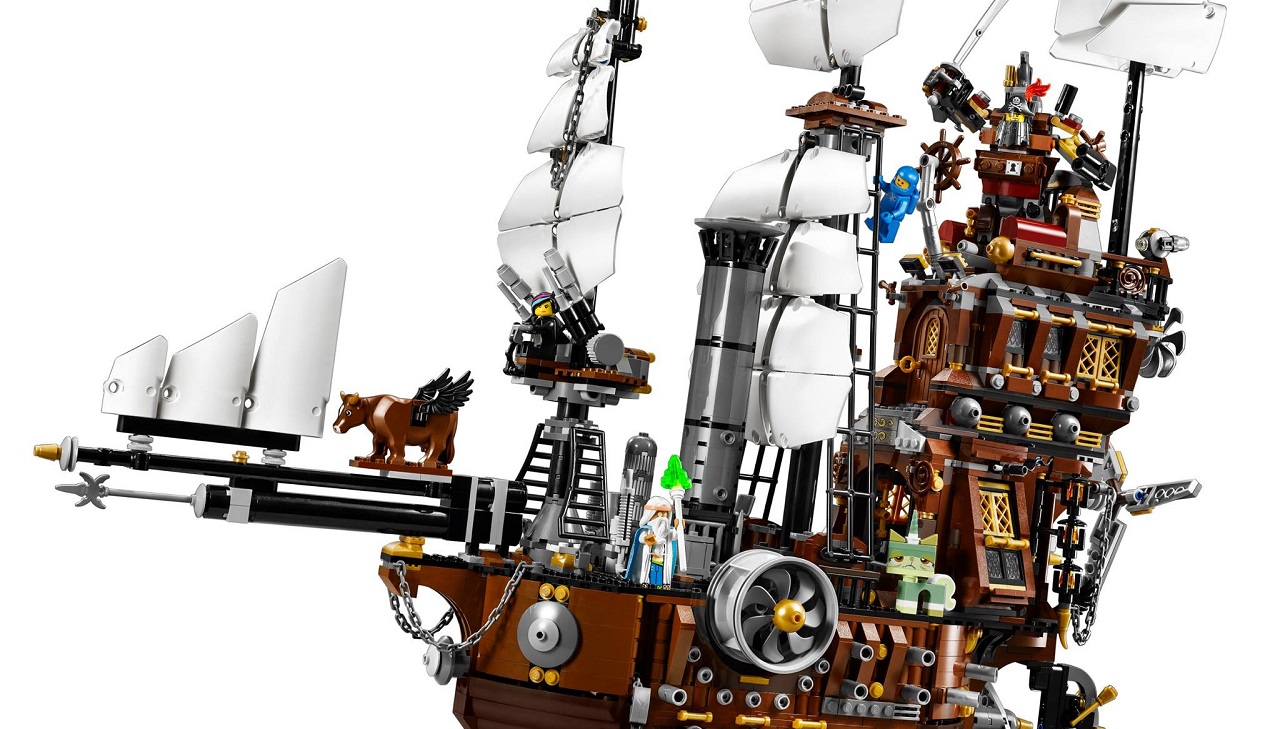
This seemed to contain the right amount of thought, and so given the venue needs moar thought.
Ah, but the Battleship movie is a piece of the popular culture that does not deserve any scrutiny whatsoever, and therefore any amount of Thinking About It is Overthinking It.
My friends, many of whom are in the spectrum between aspiring and failed screenwriters, and I often rue the missed opportunity of Battleship. Because it’s not, in fact, a ridiculous property to turn into an action movie. The very basis of the game is armed conflict between 2 parties with lots of explosives. All a writer has to do is figure out why the parties are fighting, why they can’t “see” each other (or not sense each other on radar, etc.) and, possibly, why these 2 armadas/fleets are the only 2 involved or shown.
We even mused on how even making it sci-fi would give you some interesting possibilities. Even something as easy as just making a 2 hour, slightly altered version of the ST: TOS episode “Balance of Terror” (one of the episodes you’re cribbing from in your ex., I believe) could yield some very interesting results. It’s sad that instead of using the possibilities to create cool/interesting looking ships, weapons or setting for the battles to take place in, the only sci-fi elements the creators chose to use are genetic Transmorphers style aliens.
I also suspect that some of the failure of that movie is that at no point in the movie does Liam Neeson shout “You sunk my battelship!”
There are many other differences between the two movies; the biggest one is that The Lego movie, like all the other productions of Miller & Lord, is very self-aware: self-aware of being a movie based on toys, self-aware of being a kids movie that targets fresh parents; self aware of being a monomith 101 that, at the same time, reinforces and bends the usual heroic archetypes.
Battleship, on the other hand, plays it straight: even with its ludicrous idea, it wants to be a “more serious” Michael Bay-esque variant on “Military and alien/robots blows stuff up”. If you take a few step away you can see how “A war where the lack of intelligence forces adjustments based on observation of consequences” it’s a very neat and broad idea; it could have taken a lot of different roads: drone wars with commentary, war of informations on the web or, keeping it simpler: last ship standing between two damaged vessels (maybe in a WWII setting that would have been way more fitting) but every take would have needed a bit of effort, instead Battleship drop a quick nod to the source material then goes for the laziest action movie road possible.
Just was amused at “So while we haven’t yet been subjected to Raisin Bran: The Motion Picture”… as we actually kind of have. Anyone remember the California Raisins?
http://en.wikipedia.org/wiki/Meet_the_Raisins!